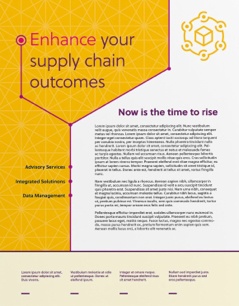 Digital supply chain management solutions are changing the game in the procurement industry. Many organizations are upgrading from outdated legacy systems that no longer meet their business needs. While the benefits of going digital are clear, integrating a new system with an organization’s existing enterprise resource planning (ERP) system is not without its challenges. In order to have a successful integration, it’s important that you begin the project with the right technical details at your disposal.
Digital supply chain management solutions are changing the game in the procurement industry. Many organizations are upgrading from outdated legacy systems that no longer meet their business needs. While the benefits of going digital are clear, integrating a new system with an organization’s existing enterprise resource planning (ERP) system is not without its challenges. In order to have a successful integration, it’s important that you begin the project with the right technical details at your disposal.
Below are five common pitfalls with integrating your supply chain management system with your ERP:
1. File loads
Before integrating a new supply chain management system, you should determine whether the system you’re interfacing with prefers delta loads, full file loads, or a combination of the two. With full file loads, all of the data is downloaded, whereas a delta load only extracts the data that has been changed since the last update. If you don’t choose the right supply chain system to integrate, files can get out of sync. This may lead to performance issues with the consumption of large files that tax your systems. A best practice is to not let technology dictate your business process or requirements. Rather, let your business process and requirements dictate what you need in technology, and choose your new system based on your organization’s unique needs.
2. Middleware
You’ll also want to identify if there is middleware involved and, if so, who owns it. Middleware is a software layer that acts as a bridge between an application and an operating system or database. Some refer to middleware as “software glue” because of its usefulness for exchanging data. By learning up front when selecting a new system if middleware is used or not, you can avoid unforeseen costs potential delays.
3. Error notifications
Another critical area to learn more about is the system’s error notifications. If an integration fails, how sophisticated are the built-in notifications and error messages? Does the vendor’s service-level agreement (SLA) apply to integrations? It’s important to understand what is included in the SLA to ensure your solution and its interfaces are always running when you need it. Best in class cloud systems of today should be able to send you specialized alerts when an error is detected. These alerts allow you to detect and remedy errors early on, helping to avoid any delays or disruption of business activities.
4. Integration design
It’s important that integrations are designed anticipating that there will be future changes and updates. Ideally, the integration should be designed in a way that minimizes the amount of ongoing maintenance and future changes that are required. By thinking ahead and integrating systems with future maintainability in mind, you can improve usability, increase performance, and avoid running into potentially costly updates and bug fixes down the road.
5. Integration limitations
Understand the limitations of each integration object. What is the preference for each object? While some software companies prefer objects to be flat files, others prefer them to be message-based.
Ensure you know the approach for each business object and what is best for your business and your requirements. Keep in mind that some ERPs are older and may not accept modern integration methods. This limits the ability to do real-time integrations. Also, are all desired integration objects available for the integration? Some objects, such as on-hand inventory or change orders, may be closed and therefore unable to be interfaced with your existing ERP.
While integrating supply chain management and ERP systems can certainly be challenging, you can avoid any potential pitfalls by going into the integration informed. By beginning the project with the right technical details and partner, you can help ensure a smoother and more successful integration overall.







Comments